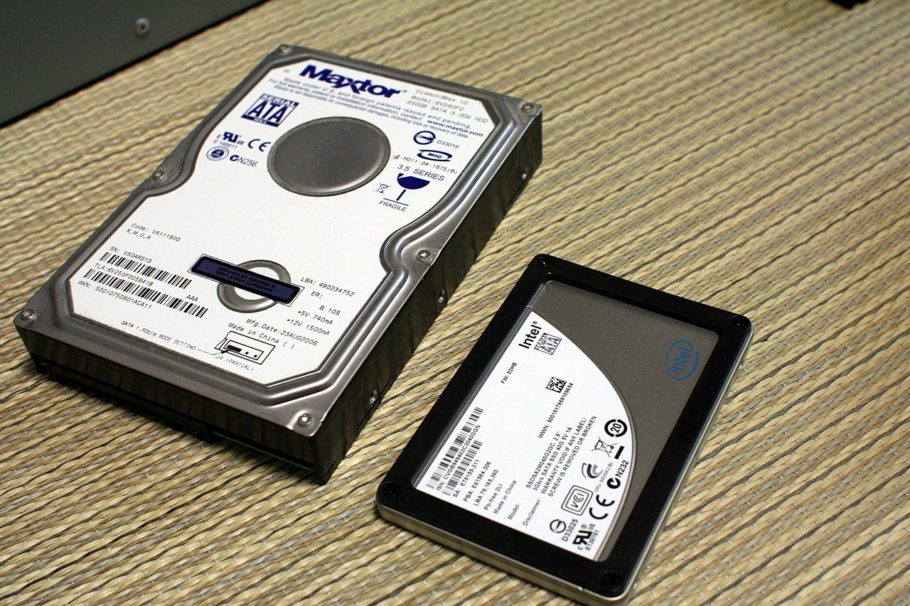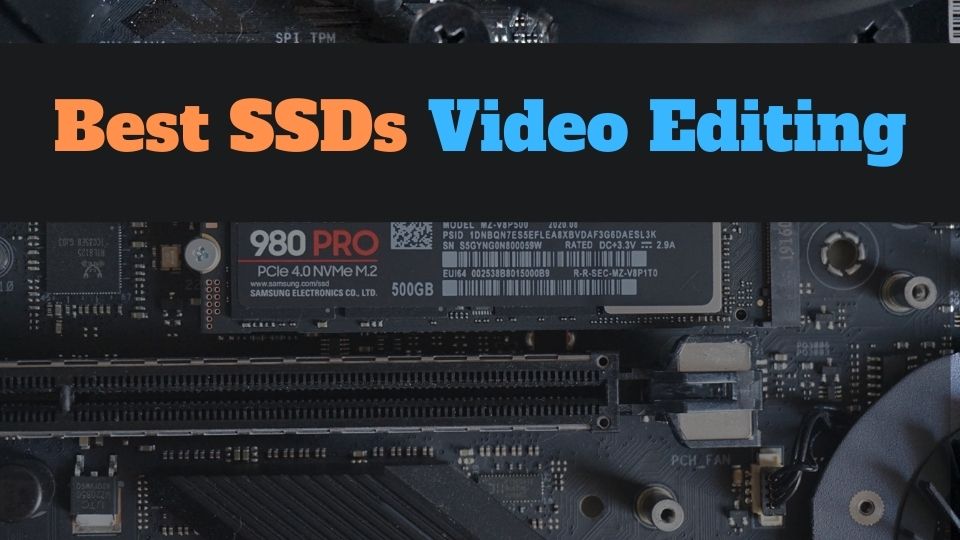1TB of hard drive or SSD storage is the recommended minimum for video editing of any length and complexity. However, you will need a bigger drive if working with 8K resolution on a daily basis. While 1TB storage can hold up to 25 hours of 4K video, you may only store around 83 minutes of 8K video on such storage device.
Full HD video editing will work just fine with 500 TB of SSD (or HDD if you don’t want your editing speed improved).
As of 2022, Full HD resolution is losing popularity with more cameras that can shoot in 4K getting available on the market. Nowadays, 4K video resolution has grown in popularity over 1080p. The next step is likely to be an 8K resolution as the new standard in video recording and streaming.
High-resolution footage always requires more storage, especially if you want to edit it. Depending on the encoding, length of video, frame rate, and resolution, you may end up needing an even bigger drive to edit and store your video projects.
It is important to know how much storage is needed for video editing. Besides that, you will also need to decide whether you want to use an SSD as your active drive that you will use when exporting a final production.
Is 500GB enough for video editing
It is enough to use one 500GB hard or solid-state storage if you’re only editing videos in 1080p resolution. A half-terabyte drive can store up to 80 hours of full HD video. That means you will be just fine with such small storage for video edits.
It is still recommended to get at least a 1TB drive just to be future-proof and ready to put your video editing up to a whole new level.
How much storage do I need to edit the 4K video?
One storage device of 1TB is going to be enough for most 4K video projects. Ideally, if you get an SSD of 1TB and use it as your main editing drive. Then you can always reuse the space by moving already-rendered videos to separate storage of bigger size (2 or more TB). The secondary storage can easily be just a conventional HDD to helo you save money and make sure your primary video editing drive is always fully-available.
How much storage do I need on my laptop for video editing?
The best is to get a laptop with at least 512 TB SSD, and, possibly a secondary SSD or HDD to store your completed edits there. Modern laptops often come with just one small Solid-state drive or one big hard drive. For video editing, it is best to edit and export on an SSD, while completed videos can be stored on a hard drive.
In case your laptop has low storage, and no storage upgrade is available, you can always use an external drive to make your video editing experience better.
What type of storage is better for video editing? HDD or SSD?
SSDs are preferable for their fast speed, low energy consumption, and higher reliability compared to a conventional hard drive. The downsize of Solid drives is a much higher cost and a limit of write cycles.
Having said that, modern SSDs will allow you to use them in video editing for up to a few years, depending on how often you export your video projects and what type of SSD you choose. For instance, 3D NAND SSD allows up to 35,000 write cycles.
In case SSD is not an option for you, just get a big enough HDD (4TB and more is best), or, better install 2 HDDs where one is going to be your main working HDD (preferably with 7200 RPM) of smaller size (up to 1TB), and the second one is persistent storage of 4TB space for finalized videos.
HDD is still a good choice if you are on a budget, and they are reliable enough for video editing.
Getting a 4, 8 and even 16 TB hard disk is not a big deal. The largest SSDs of 16TB are now not popular and are very expensive (around $5000), while those available on the market are just 8TB in most cases. Even the 8TB SSD is much more expensive than an SSD of the same size.
How much storage space do popular video formats take up?
The resulting file size of your video recording will greatly depend on the format or codec you use. For example, one of the most common H.264/AVC video formats would occupy a total of 34.69 GB of space for 1 hour 1080p video. Just imagine that you need to store 100 videos in this format for a long time. This would result in more than 3TB of space occupied. Obviously, SSD is not worth the expenses for this case.
Let’s take another example. Next-generation of H.264 format – H.265. This codec will require about 3 GB of storage capacity for a 1-hour video in Full HD resolution. It’s a big improvement, but let’s have another example.
HDV 1080 will consume about 9.4 GB of storage for a 1080p video with 24 fps.
And if you want to store raw 1080p footage – this will require at least 537.5 GB of space on your disk.
What about a 4K video size?
Of course, the UHD resolution will consume much more space using the same encodings.
HEVC (H.265) encoded 1-hour video in 4K resolution will take about 33 GB of storage space.
ProRes 422 encoded 4K video file of 1-hour length would require about 226 GB of space at least.
Phantom Flex 4K raw format will ask you to occupy a whopping 1500 GB or 1.5 TB of storage space for a 1-hour video.
Note: Values above are just a rough estimation for 24fps videos. They can get higher and lower depending on the quality settings you use.
How much storage do I need for video editing?
Based on the previous section with encoding + resolution video size estimations, let’s summarize the storage space requirements when editing a large number of videos.
For this estimation, we will take the most common full HD video format, and the most common 4K video format. Then we will calculate an average, and after that, we will try to estimate how many hours of videos of both UHD and Full HD resolutions you can store on various HDD devices.
Full HD H.264/AVC for 1 hour is: 34.69 GB.
4K H.265 for 1 hour is: 33 GB.
Average for 1 hour of Full HD or 4K video is: 34.69 + 33 / 2 = 33.845 GB.100 videos of both Full HD and 4K resolution would occupy at least 3.384 GB of space.
Do not forget, when using video editing software like Camtasia, Vegas Pro, FilmoraPro, and other tools like those, you will also have to spend some space storing the intermediate video editing footage. This may include effects, audio files, pictures, and video project files. Taking this into account, we can estimate of required storage size for 100 hours of videos of both Ultra HD and Full HD formats, edited with the help of video editing software, which would require at least 4 TB of storage space.
You can now estimate yourself how much more space you will need if you want to constantly store 300 or 400 video files of the mentioned formats.
While the storage size requirements may vary, depending on how often you need to edit videos, how many of those you will be working on simultaneously, and what format you will be using, the recommended storage device size is at least 4 TB if you are frequently working with videos.
An 8 TB hard drive will be more than enough for any type of video editing work. On the other hand, your best bet is 1TB SSD + 4/8 TB HDD.
If you need more – you can easily add additional HDD later on, but I recommend starting from at least 4 TB. This will go a long way, and you will be having plenty of additional storage in your reserve.
*Be advised: I am not taking into account any other files that you may want to store on the same drive with your videos. So, keep that in mind too, as you might need to increase your storage size to allow other files to share the same device with your videos.
You may also be interested in: Top 10 Best SSDs for video editing.



